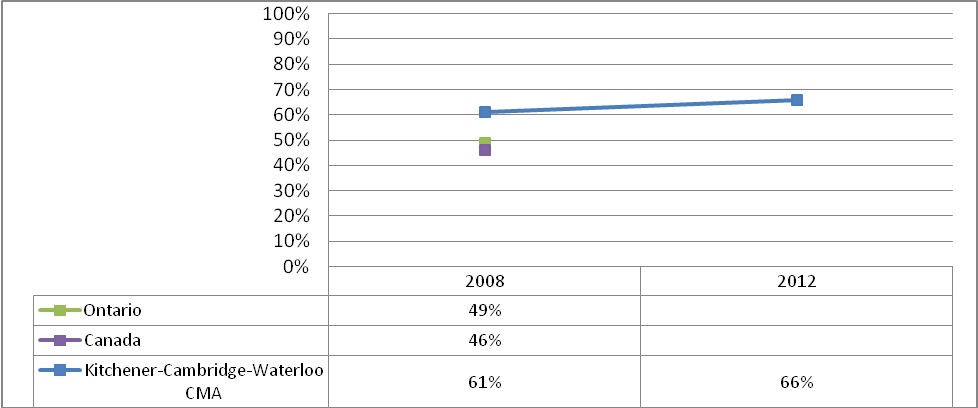Social Capital as a protective factor for reducing crime
Social capital refers to the human connections and capacities that contribute to the wealth and well being of a community. Social capital is developed in many ways such as participating in community groups, helping someone solve a problem or by saying hello to a neighbour. High levels of social capital have been linked to reduced violence in neighbourhoods. A community characterized by strong interpersonal connections helps to reduce crime by making it more likely that people in the community will watch over the neighbourhood. A simple and widely accepted measure of social capital asks the question, ‘Generally speaking, would you say that most people can be trusted or that you cannot be too careful in dealing with people?’
The Statistics

Data Sources: Statistics Canada, General Social Survey Time Use Cycle (Released Every Five Years); University of Waterloo Survey Research Centre, Local Area Survey (Released Annually)
The Story Behind the Numbers
Social trust is slightly higher in Ontario than it is in Canada and it is significantly higher in the Kitchener-Cambridge-Waterloo Census Metropolitan Area (CMA). Similar results were found on a second question in the 2008 General Social Survey, asking how much respondents trust people in their neighbourhood. The results bode well for Waterloo Region and present an important protective factor for the community. The increase in social capital between 2008 and 2012 is within the margin of error, indicating that social capital in the region is stable. Social capital does not form by itself. It tends to be the outcome of strategic and focused efforts on behalf of local institutions including the grass roots and local government to ensure an informed and engaged citizenry.
Read the Community Responses:
Life at 17 by Karen Scian, Waterloo City Councillor, Conestoga College instructor, Waterloo Public Library Trustee, Chair of the Board for Community Justice Initiatives
